In today’s global marketplace, sea freight has emerged as a vital channel for facilitating trade between nations, specifically between China and Norway. With China now recognized as Norway’s largest trading partner outside the European Union, the demand for efficient and reliable shipping options is more pronounced than ever. Sea freight offers numerous advantages, including cost savings compared to air freight, the ability to transport large volumes and oversized cargo, and a lower carbon footprint, making it an environmentally responsible choice. This comprehensive guide will navigate the intricacies of sea freight from China to Norway, covering shipping methods, cost comparisons, transit times, port logistics, and more, empowering businesses to make informed decisions for their import needs.
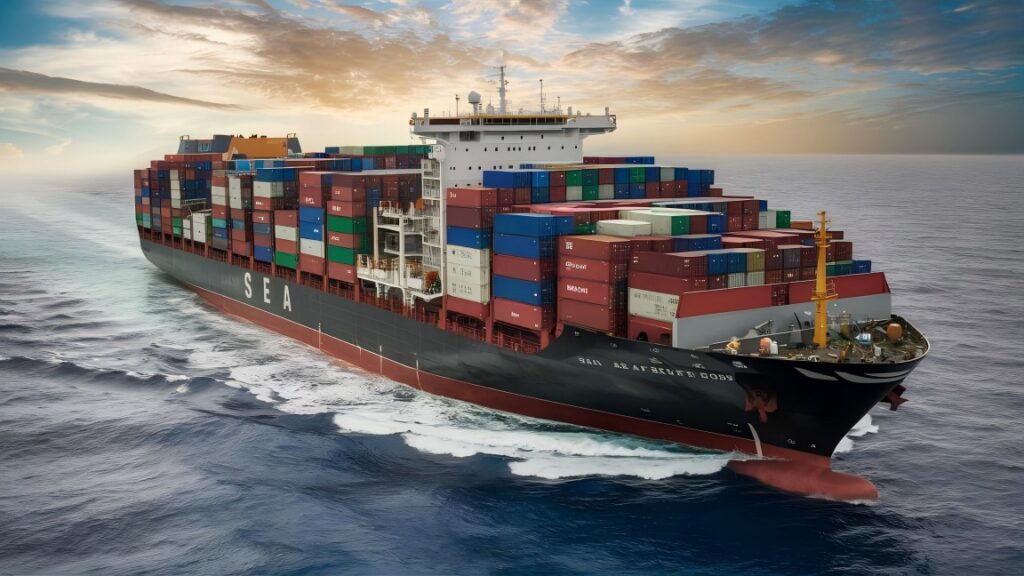
Introduction to Sea Freight from China to Norway
Sea freight plays a pivotal role in facilitating trade between China and Norway, serving as a cost-effective and efficient means for transporting a vast array of goods. As two nations increasingly engaged in trade, the demand for reliable shipping options has surged. According to recent data, China has become Norway’s largest trading partner outside the European Union, with significant imports ranging from electronics and machinery to textiles and consumer goods.
Utilizing sea freight offers notable advantages, including reduced shipping costs compared to air freight, the capacity to handle large volumes of cargo, and the ability to transport oversized and heavy items that may not be feasible via other means. Additionally, shipping by sea typically has a lower carbon footprint, making it an environmentally friendly option for businesses looking to enhance their sustainability efforts.
Understanding Sea Freight Options
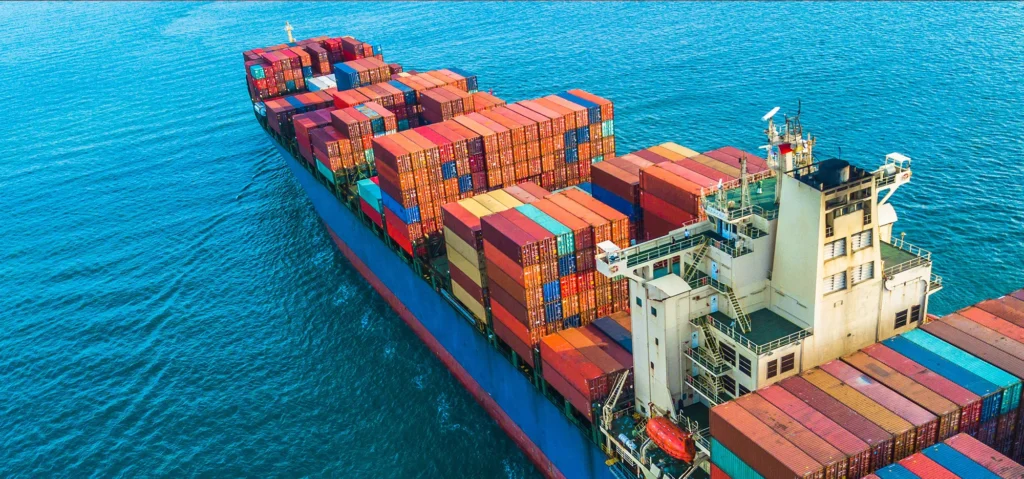
When considering sea freight from China to Norway, businesses can choose between Less than Container Load (LCL) and Full Container Load (FCL) shipping methods. Each option has unique features tailored to specific shipping needs.
Less than Container Load (LCL) Shipping
Less than Container Load (LCL) refers to a shipping method where multiple shippers share the space within a single shipping container. This option is particularly advantageous for businesses that do not have enough cargo to fill an entire container.
Advantages of LCL:
- Cost-Effective: LCL shipping allows companies to pay only for the space they utilize, making it an economical choice for smaller shipments.
- Flexibility: Businesses can send smaller quantities frequently without waiting to accumulate enough goods for a full container.
- Reduced Inventory Costs: Companies can keep lower inventory levels by using LCL to ship products as needed, thus optimizing cash flow.
Ideal Use Cases for LCL:
- Small to medium-sized businesses that import goods sporadically.
- Companies looking to test the market with limited quantities of products.
- Businesses needing to import various types of cargo from different suppliers in China.
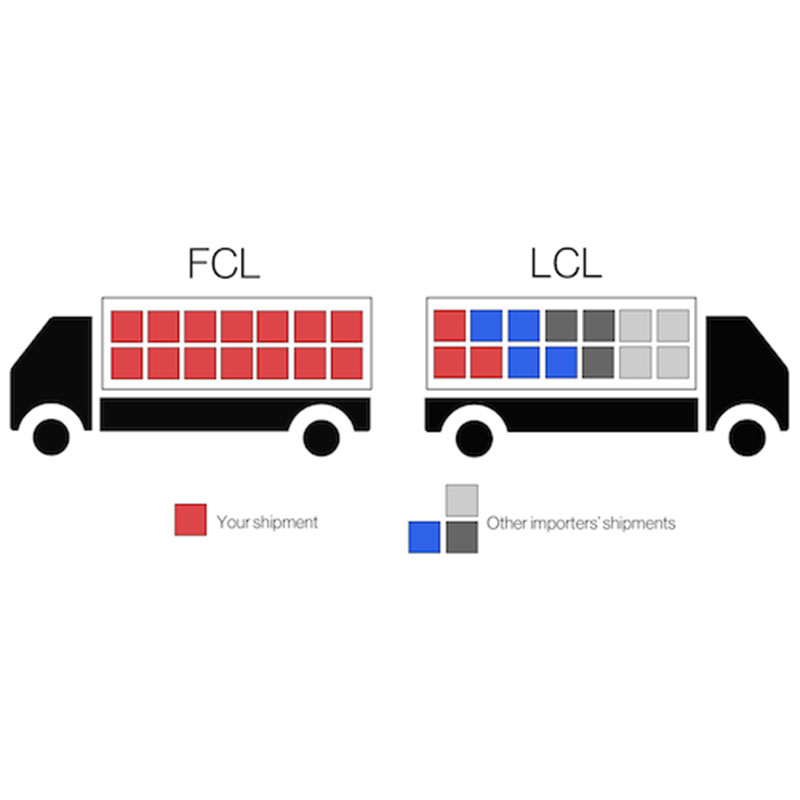
Full Container Load (FCL) Shipping
Full Container Load (FCL) is a shipping method wherein a single shipper occupies an entire container, irrespective of the container’s capacity. This option is ideal for businesses with larger volumes of cargo.
Advantages of FCL:
- Cost Efficiency: FCL often proves to be more economical for bulk shipments, as the shipping cost per unit decreases with higher volumes.
- Faster Transit Times: With FCL, fewer stops are typically made to load and unload cargo from multiple shippers, leading to quicker delivery times.
- Reduced Risk of Damage: Since the container is dedicated to one shipper, there’s a lower chance of cargo handling issues, which can lead to damage or loss.
Ideal Use Cases for FCL:
- Large enterprises with substantial shipping volumes.
- Businesses looking to transport a single type of product, such as machinery or raw materials.
- Companies operating on tight production schedules that require reliable and timely deliveries.
Utilizing the right shipping method is crucial for optimizing logistics, and understanding these options allows businesses to select the most suitable approach based on their specific needs.
Dantful International Logistics excels in providing tailored solutions for sea freight, offering both LCL and FCL shipping options to meet diverse client requirements. For more information on our Ocean Freight services, consider contacting us today to streamline your import process from China to Norway.
Comparing LCL and FCL Shipping Costs
When it comes to optimizing logistics and managing budgets for shipping goods from China to Norway, understanding the cost dynamics between Less than Container Load (LCL) and Full Container Load (FCL) is crucial. Both shipping methods have distinct cost factors that can significantly affect the overall expenditure.
Cost Factors for LCL and FCL
- Freight Charges:
- LCL: Costs are calculated based on the volume or weight of the cargo, with charges typically applied per cubic meter (CBM) or per ton. This can lead to higher costs per unit for smaller shipments comprising multiple suppliers.
- FCL: The cost is based on a flat rate for renting the entire container, regardless of whether it is fully loaded. Thus, the per-unit cost decreases significantly with larger shipments.
- Handling Fees:
- LCL: Additional handling fees may apply, including those for consolidating cargo from multiple shippers into one container. These fees can add up, especially if the shipment includes several different items.
- FCL: Handling fees are generally lower per unit, as the container is solely reserved for one shipper’s goods.
- Customs Clearance:
- Costs associated with customs clearance can vary based on the shipment’s complexity and the chosen freight forwarder. Typically, Dantful International Logistics can handle customs clearance efficiently, optimizing costs for both LCL and FCL shipments.
- Insurance:
- For both LCL and FCL, insurance is advisable to protect against potential loss or damage. The insurance costs will differ based on the total value of the goods being shipped.
- Additional Costs:
- LCL may incur additional fees such as terminal handling fees, documentation fees, and warehousing charges if the shipment isn’t picked up promptly.
- FCL may also involve similar charges but could yield savings by avoiding multiple handling events.
Average Rates for LCL and FCL from China to Norway
| Shipping Method | Average Rate (USD per CBM or per Container) | Ideal Shipment Range |
|---|---|---|
| LCL Shipping | $50 – $150 per CBM | 1 – 15 CBM |
| FCL Shipping | $1,800 – $3,000 per 20′ container | 15 CBM and above |
Note: Rates can vary based on the shipping line, demand, and variations in fuel costs; contacting Dantful International Logistics for a tailored quote is recommended.
Read More:
- Shipping From China to the United States
- Shipping From China TO CANADA
- Shipping From China To Netherlands
- Shipping From China To UNITED KINGDOM
- Shipping From China To ALGERIA
- Shipping from China to UAE
- Shipping from China to Saudi Arabia
Typical Transit Times for Sea Freight
Accurate planning requires an understanding of transit times when shipping goods. This section explores the average transit times for LCL and FCL shipments from China to Norway and factors that may influence these times.
Average Transit Times for LCL and FCL
- LCL Shipping: Average transit times for LCL shipments from China to Norway can range from 25 to 45 days, depending on consolidation times and the selected shipping route.
- FCL Shipping: FCL shipments benefit from faster transit times, typically ranging from 20 to 35 days, due to direct shipping routes and fewer stops for container handling.
Factors Affecting Transit Times
- Shipping Routes: The chosen shipping route can significantly impact transit times. Direct routes tend to be faster than indirect ones with multiple stops.
- Port Congestion: High traffic at ports can cause delays in loading and unloading containers, particularly at busy ports in China or Norway.
- Weather Conditions: Adverse weather can result in shipping delays, affecting all types of cargo, especially during stormy seasons.
- Customs Clearance: The efficiency of customs procedures at both the departure and arrival ports can either expedite or delay shipment transit times.
- Freight Forwarder Efficiency: The performance of the chosen freight forwarder, such as Dantful International Logistics, in managing logistics, documentation, and operational aspects can lead to smoother and faster shipping experiences.
For businesses looking to optimize their shipping strategy, considering these factors and consulting with experts in logistics can lead to more accurate planning and cost-effective solutions tailored to specific needs. Explore more about our services by visiting Dantful International Logistics for specialized maritime freight solutions.
Major Chinese Ports for Exports to Norway
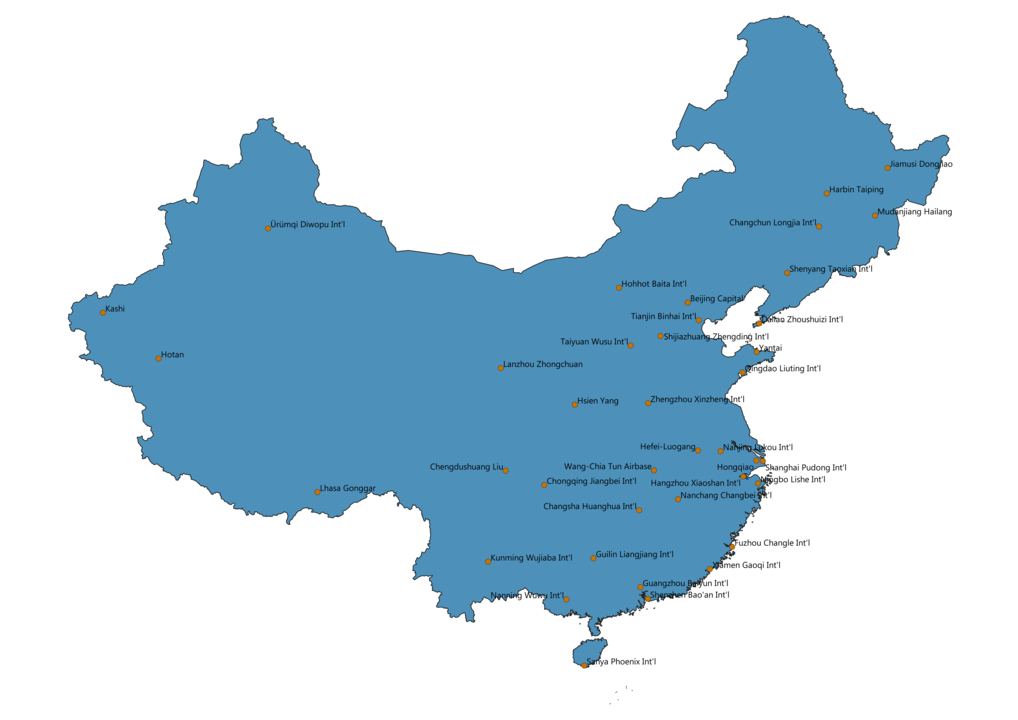
When navigating sea freight from China to Norway, understanding the key ports in China is essential for ensuring efficient logistics. The following ports are notable for their export activities to Norway:
Key Ports in China for Sea Freight to Norway
- Shanghai Port
- As one of the largest and busiest ports in the world, Shanghai Port is a major hub for international shipping. It handles a vast volume of containers, making it a preferred choice for businesses exporting to Norway.
- Shenzhen Port
- Located near Hong Kong, Shenzhen Port is a vital gateway for exports. It facilitates swift access to numerous manufacturing centers, making it an ideal port for electronic goods and consumer products destined for Norway.
- Ningbo-Zhoushan Port
- This port ranks among the top in global container throughput. Ningbo-Zhoushan Port is strategically positioned and provides an extensive range of shipping services, making it a preferred choice for companies exporting bulk goods to Norway.
- Guangzhou Port
- With its proximity to a significant manufacturing base, Guangzhou Port offers diverse shipping options. It serves a variety of goods, including textiles and machinery, making it a valuable port for exporters looking to reach the Norwegian market.
- Tianjin Port
- As the primary port serving northern China, Tianjin Port plays a key role in facilitating trade. Its strategic location allows access to Beijing and surrounding regions, making it advantageous for shippers exporting goods to Norway.
Advantages of Each Port
| Port | Advantages |
|---|---|
| Shanghai Port | – Extensive shipping connections worldwide – Highly efficient cargo handling facilities |
| Shenzhen Port | – Proximity to major manufacturing hubs – Rapid processing times for exports |
| Ningbo-Zhoushan Port | – High container handling capacity – Diverse shipping services available |
| Guangzhou Port | – Access to a broad range of goods – Excellent connectivity for distribution networks |
| Tianjin Port | – Strong infrastructure capabilities – Access to northern markets |
Norwegian Ports for Receiving Sea Freight
Once goods arrive in Norway, understanding the main ports for receiving sea freight is crucial for businesses planning to import from China. The following ports are key entry points for cargo shipments:
Main Ports in Norway for Receiving Goods from China
- Oslo Port
- As Norway’s capital and largest city, Oslo Port serves as a significant entry point for imports. It handles numerous container shipments and provides access to a range of logistical services.
- Bergen Port
- The second-largest port in Norway, Bergen Port is a vital hub for shipping and receiving goods, especially for coastal and offshore industries. It supports a range of cargo types and offers efficient handling.
- Stavanger Port
- Located in the heart of Norway’s oil and gas industry, Stavanger Port is a strategic port for receiving industrial goods and equipment, in addition to general cargo.
- Drammen Port
- Positioned on the Drammenselva River, Drammen Port specializes in container handling and provides easy access to the Oslo metropolitan area, making it an essential port for inland distribution.
- Kristiansand Port
- Kristiansand Port serves as a regional hub for southern Norway, handling various goods, including agricultural products and industrial materials, making it a key point for imports from China.
Port Infrastructure and Handling Capabilities
Norwegian ports are equipped with advanced infrastructure and handling capabilities that enhance logistics efficiency:
| Port | Infrastructure and Handling Capabilities |
|---|---|
| Oslo Port | – Highly developed container terminal facilities – Advanced warehousing options |
| Bergen Port | – Deep-water berths suitable for large vessels – Specialized cargo-handling equipment |
| Stavanger Port | – Comprehensive support for offshore and industrial logistics – Efficient customs clearance |
| Drammen Port | – Modern container handling equipment – Quick access to major transport routes |
| Kristiansand Port | – Versatile facilities for various cargo types – Strong intermodal connections |
Selecting the right ports for both departure and arrival enhances the efficiency of the supply chain, ensuring timely delivery and cost-effectiveness. For businesses engaged in international shipping, leveraging the strengths of Dantful International Logistics can lead to streamlined operations from China to Norway. To explore tailored shipping solutions, visit Dantful International Logistics for more information and assistance.
Preparing Your Shipment for Sea Freight
Proper preparation of your shipment is essential to ensure a smooth and efficient sea freight process from China to Norway. This includes gathering essential documentation and adhering to packaging and labeling standards.
Essential Documentation
- Commercial Invoices
- A commercial invoice serves as a bill for the goods being sold and is crucial for customs clearance. It should include detailed information such as the description of goods, quantity, unit price, total price, and terms of sale. Accurately preparing this document is vital, as it establishes the value of the shipment.
- Packing Lists
- A packing list outlines the contents of your shipment, detailing each item, its dimensions, and weight. This document provides customs officials and freight forwarders with essential information for inspection and facilitates the unloading process.
- Bills of Lading
- The bill of lading (BOL) is a legal document between the shipper and carrier. It serves as a receipt for the goods and a contract for transportation. The BOL should contain the shipper’s details, consignee information, shipping instructions, and a description of the cargo.
- Insurance Certificates
- Obtaining insurance for your shipment is highly recommended to protect against loss or damage during transit. The insurance certificate verifies coverage and is an important document for both the shipper and the consignee.
- Export Licenses
- Depending on the nature of the goods, an export license may be required. It is essential to verify whether your product falls under regulated categories that necessitate licensing.
Packaging and Labeling
Packaging Guidelines for Sea Freight
- Durable Materials: Use strong, weather-resistant materials such as wooden crates or sturdy cardboard boxes to protect your goods from moisture and damage during transport.
- Secure Packing: Ensure all items are securely packed and cushioned to prevent movement within the container. Utilize bubble wrap, packing peanuts, or foam to protect fragile items.
- Weight Distribution: Distribute weight evenly within the container to prevent shifting during transit, which can lead to damage or loss of cargo.
- Compliance with Regulations: Consult international shipping regulations to confirm that your packaging meets all safety and environmental standards.
Proper Labeling for Customs Clearance
- Clear Identification: Each package should be labeled clearly with the contents, including any hazardous materials, to facilitate quick identification during inspection.
- Consignee and Shipper Information: Include the name and address of both the consignee (recipient) and shipper (sender) on the labels to ensure accurate delivery.
- Customs Labels: Use customs labels with proper codes and descriptions to avoid delays during customs inspections. This includes indicating the country of origin and any applicable tariff codes.
Navigating Customs Clearance
Customs clearance is a critical step in the import/export process. Understanding the procedures in both China and Norway helps ensure compliance and smooth transit of your goods.
Understanding Customs Procedures in China and Norway
- China’s Export Customs: Before shipment, exporters must submit appropriate documentation to Chinese Customs, which includes a customs declaration form, commercial invoice, packing list, and any necessary export licenses. Compliance with regulations is mandatory to avoid fines or shipment delays.
- Norway’s Import Customs: Upon arrival in Norway, goods must pass through customs clearance. Norway’s customs authorities will inspect the shipment and verify that all documentation is accurate and complete. The importer is responsible for ensuring all duties, taxes, and fees are paid. The key documents typically required include the bill of lading, commercial invoice, and packing list.
Tips for Smooth Customs Clearance
- Accurate Documentation: Ensure that all documents are accurate, complete, and match the contents of your shipment. Discrepancies can lead to delays and additional inspections.
- Customs Broker: Consider hiring a customs broker who is knowledgeable about the customs procedures in both China and Norway. They can facilitate the clearance process and help navigate any complexities.
- Stay Informed on Regulations: Keep abreast of any changes in customs regulations in both countries, as these can affect your shipment. Consult resources from customs authorities or your freight forwarder for the latest information.
- Timely Submission: Submit all necessary documentation as early as possible to avoid last-minute delays. Early submission allows customs officials to process the paperwork promptly.
- Communicate with Your Freight Forwarder: Maintain open communication with your freight forwarder, such as Dantful International Logistics, to ensure that all aspects of the shipping and customs process are handled efficiently.
Efficient preparation, thorough documentation, and an understanding of customs procedures are essential components for a successful sea freight operation from China to Norway. For expert assistance in navigating logistics and customs, explore the comprehensive solutions offered by Dantful International Logistics.
Tracking Your Sea Freight Shipment
Importance of Shipment Tracking
Effective shipment tracking is a vital component of the logistics process when transporting goods from China to Norway. It enhances transparency and control over the supply chain, providing several key benefits:
- Real-Time Visibility: Shipment tracking allows businesses to monitor their cargo’s location and status in real-time. This visibility helps in planning and managing inventory more efficiently.
- Improved Communication: By keeping stakeholders informed about the shipment’s status, tracking minimizes uncertainties and enhances communication between shippers, consignees, and freight forwarders.
- Proactive Problem-Solving: With tracking tools, businesses can identify potential delays or issues promptly and take corrective actions before they escalate into significant problems.
- Customer Satisfaction: Providing customers with updates on their orders enhances their experience and builds trust. Knowing when to expect their goods can significantly improve customer satisfaction.
- Regulatory Compliance: Tracking shipments also aids in maintaining compliance with various regulations and customs requirements, ensuring that all documentation aligns with the physical transit of goods.
Tools and Services for Tracking Sea Freight
Various tools and services are available for tracking sea freight shipments, making it easier for businesses to stay informed:
- Carrier Tracking Systems: Most major shipping carriers, such as Maersk and MSC, offer online tracking platforms. Users can input their tracking number to access real-time updates on their shipment’s status.
- Freight Forwarder Tracking Tools: Many freight forwarding companies, including Dantful Logistics, provide comprehensive tracking services as part of their logistics solutions. These tools often consolidate tracking information from various carriers for a streamlined view.
- Mobile Apps: Numerous logistics and shipping companies offer mobile applications, enabling users to track their shipments conveniently from their smartphones. These apps often provide push notifications for status updates.
- Third-Party Tracking Services: Tools like ShipStation and CargoSmart allow users to track shipments from multiple carriers in one place. These services offer enhanced visibility and reporting features.
- Automated Alerts: Businesses can set up automated alerts via emails or SMS to receive updates on critical milestones in the shipment process, including departures, arrivals, and delays.
Utilizing these tools enhances the overall shipping experience and contributes to smoother operations.
Choosing the Right Sea Freight Forwarder
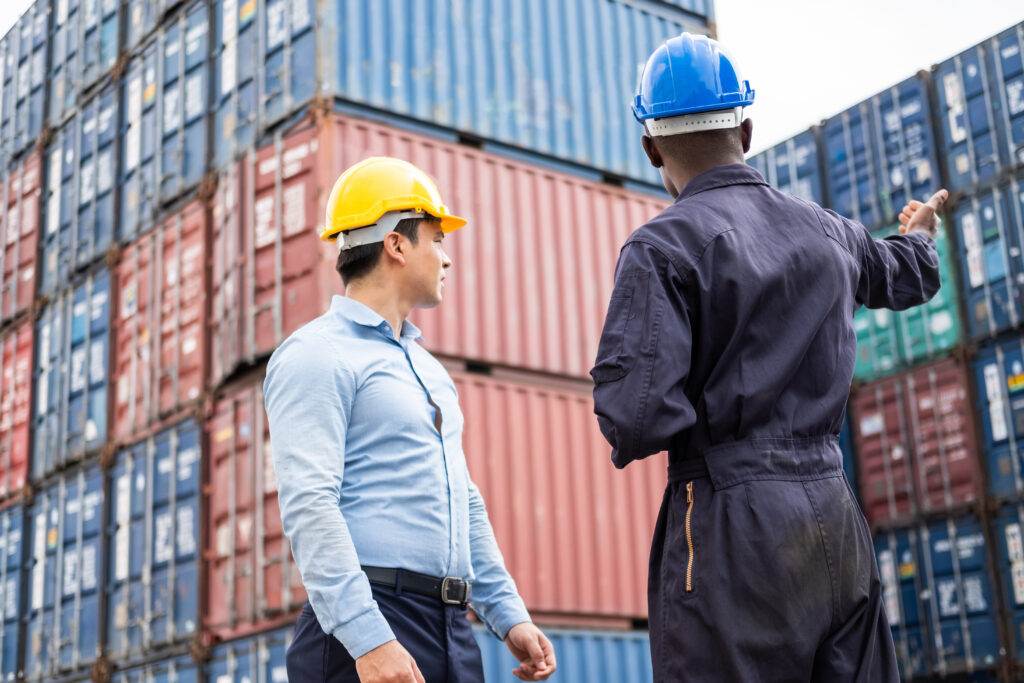
Selecting the right freight forwarder is critical for ensuring a seamless shipping process. With numerous options available, it is essential to evaluate potential partners carefully.
Qualities of a Reliable Freight Forwarder
- Experience and Expertise: A forwarder with extensive experience in international shipping and customs regulations can navigate the complexities of logistics more effectively.
- Strong Network: A reliable freight forwarder should have a robust network of carrier partnerships, enabling them to secure the best rates and services for their clients.
- Customer Service: Exceptional customer service is crucial. A forwarder should be responsive, providing assistance and updates throughout the shipping process.
- Technology-Driven Solutions: Modern freight forwarders leverage technology to offer tracking, documentation, and inventory management solutions that enhance efficiency and transparency.
- Compliance Knowledge: A competent forwarder must stay updated on relevant regulations and ensure compliance with customs and import/export laws in both the origin and destination countries.
Questions to Ask When Selecting a Forwarder
- What is your experience with shipments from China to Norway?
- Can you provide references from similar businesses in my industry?
- How do you handle customs clearance and potential delays?
- What technology tools do you offer for tracking and managing shipments?
- What are your payment terms, and how do you structure your pricing?
These questions can help ascertain if a potential freight forwarder aligns with your logistics needs.
Why Choose Dantful Logistics
Dantful Logistics stands out as a highly professional, cost-effective, and high-quality one-stop international logistics service provider for global traders. Key reasons to choose Dantful include:
- Expertise in International Shipping: Dantful has extensive experience in managing shipments from China to various international markets, including Norway.
- Robust Tracking Solutions: The company provides advanced tracking tools that enable real-time visibility and efficient communication regarding your shipments.
- Comprehensive Services: From Door to Door Shipping to customs clearance and warehouse services, Dantful offers a full suite of logistics solutions tailored to meet the specific needs of clients.
- Customer-Centric Approach: Dantful prioritizes customer satisfaction by providing timely updates and exceptional support throughout the shipping process.
- Competitive Rates: By leveraging its strong carrier relationships, Dantful is able to offer competitive pricing without compromising on service quality.
For businesses looking to optimize their sea freight operations, Dantful International Logistics provides the expertise and resources necessary for a successful shipping experience. To learn more about their services, visit Dantful today.
Dantful International Logistics Services:
- Dantful Ocean Freight Services
- Air Freight From China
- Amazon FBA Freight Forwarding
- WAREHOUSE Services
- One-Stop Customs Clearance Solution
- Cargo Insurance Services in China
- DDP Shipping Services By Dantful Logistics
- Out of Gauge Cargo Transportation Shipping Services
FAQs
1. What is sea freight, and why should I choose it for shipping from China to Norway?
Sea freight is a method of transporting goods via ocean vessels. It is often chosen for its cost-effectiveness, capacity to handle large volumes, ability to ship oversized items, and generally lower carbon footprint compared to air freight. This makes it an ideal option for businesses importing a wide range of products from China to Norway.
2. What are the differences between Less than Container Load (LCL) and Full Container Load (FCL)?
- LCL (Less than Container Load) involves sharing container space with other shippers, making it suitable for smaller shipments. It is cost-effective but may have longer transit times due to consolidation.
- FCL (Full Container Load) means one shipper occupies an entire container, providing faster transit times and lower costs per unit for larger volumes. It is ideal for businesses with substantial shipping needs.
3. How much does it cost to ship goods via LCL and FCL from China to Norway?
Shipping costs vary depending on the method:
- LCL: Typically ranges from $50 to $150 per CBM.
- FCL: Average rates can be between $1,800 and $3,000 for a 20′ container. For precise quotes, it is recommended to contact Dantful International Logistics.
4. What is the average transit time for sea freight shipments?
- LCL shipments generally take between 25 to 45 days, while FCL shipments have a quicker transit time of 20 to 35 days. Transit times can vary based on shipping routes, port congestion, and other factors.
5. Which ports in China are best for shipping to Norway?
Key ports for exports to Norway include Shanghai Port, Shenzhen Port, Ningbo-Zhoushan Port, Guangzhou Port, and Tianjin Port. Each port offers unique advantages such as extensive shipping connections and efficient handling facilities.
6. What documentation is required for shipping from China to Norway?
Essential documents include:
- Commercial invoices
- Packing lists
- Bills of lading
- Insurance certificates
- Export licenses (if applicable)
7. How can I ensure smooth customs clearance for my shipment?
To ensure efficient customs clearance, provide accurate documentation, consider hiring a customs broker, stay updated on regulations, and maintain open communication with your freight forwarder, such as Dantful International Logistics.
8. How can I track my sea freight shipment?
Businesses can track their shipments using carrier tracking systems, freight forwarder tracking tools, mobile apps, third-party tracking services, and automated alerts for critical shipment milestones.
9. What should I consider when choosing a freight forwarder?
Look for qualities such as experience, a strong network, excellent customer service, technology-driven solutions, and compliance knowledge. Asking specific questions about their expertise and services can help identify the right forwarder for your needs.

Young Chiu is a seasoned logistics expert with over 15 years of experience in international freight forwarding and supply chain management. As CEO of Dantful International Logistics, Young is dedicated to providing valuable insights and practical advice to businesses navigating the complexities of global shipping.

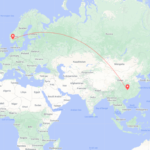
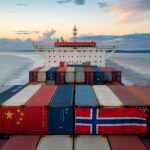
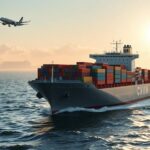




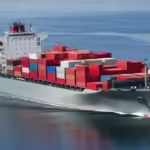
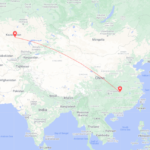

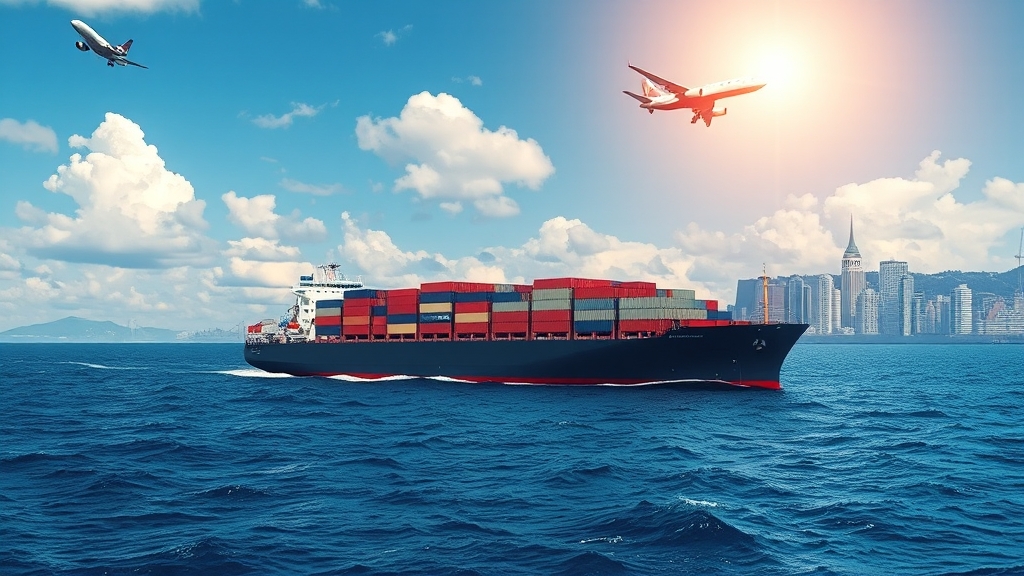

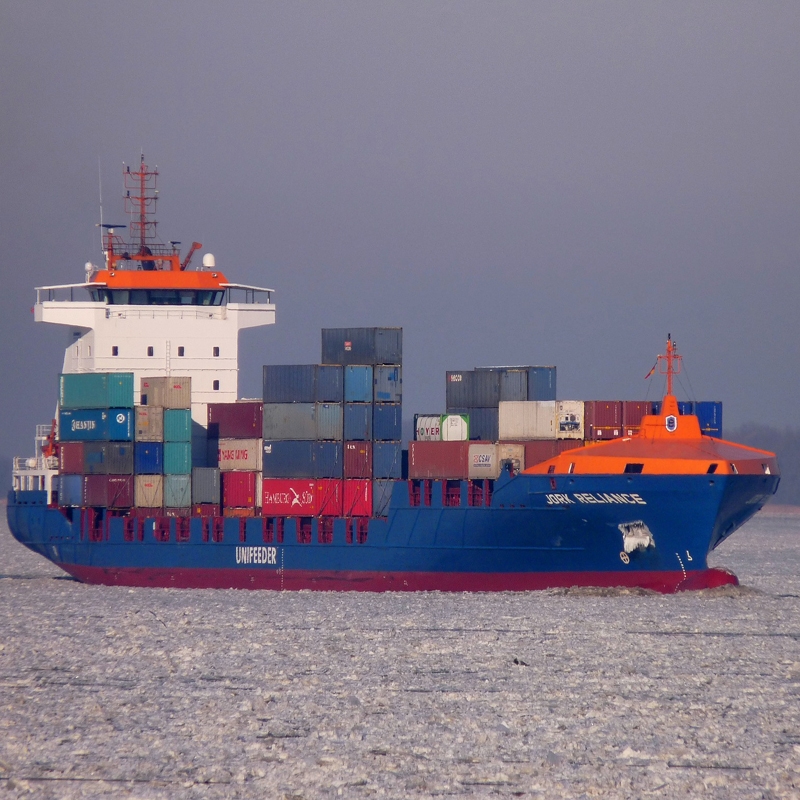
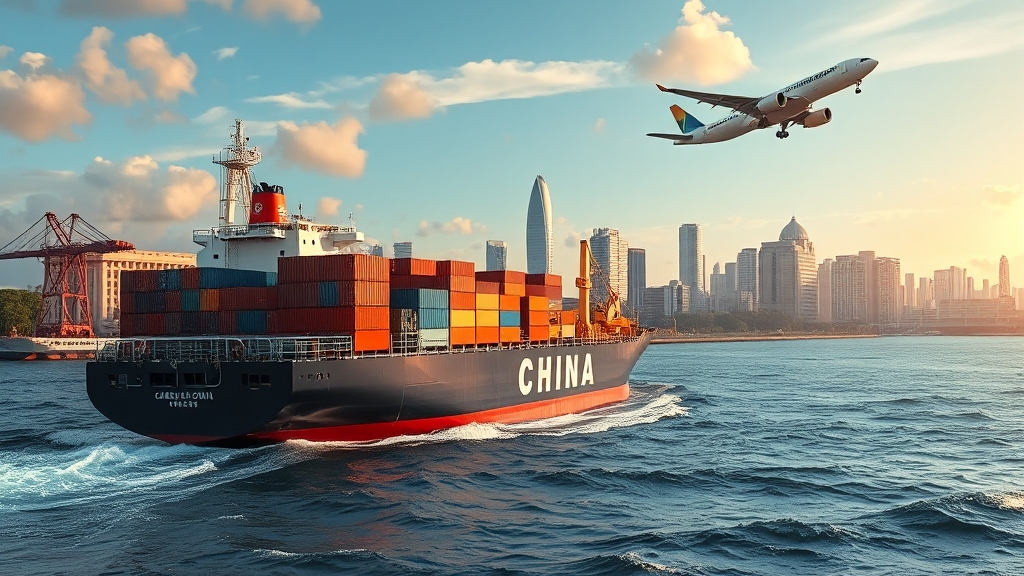
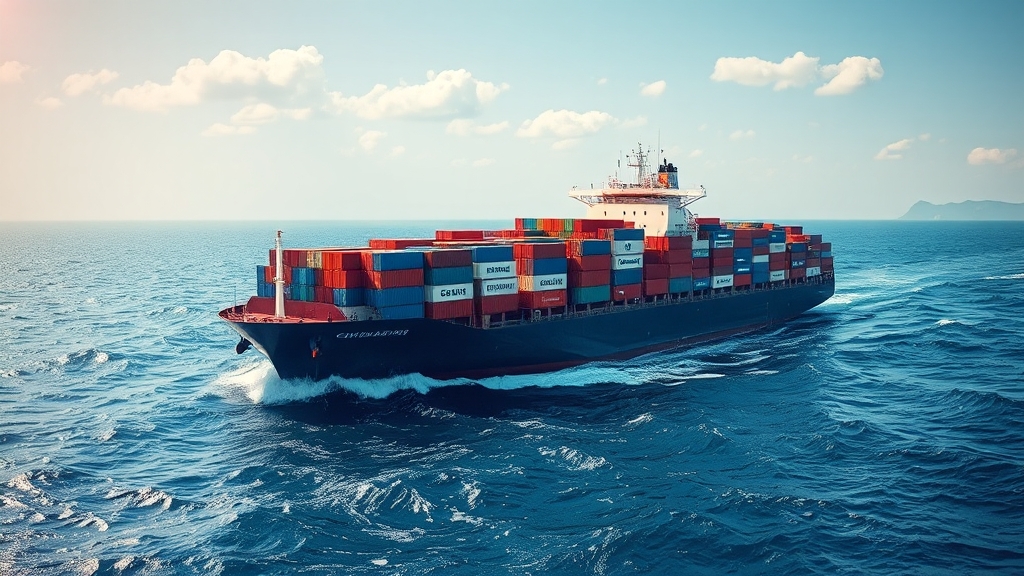





 Afrikaans
Afrikaans Shqip
Shqip አማርኛ
አማርኛ العربية
العربية Հայերեն
Հայերեն Azərbaycan dili
Azərbaycan dili Euskara
Euskara Беларуская мова
Беларуская мова বাংলা
বাংলা Bosanski
Bosanski Български
Български Català
Català Cebuano
Cebuano Chichewa
Chichewa 简体中文
简体中文 繁體中文
繁體中文 Corsu
Corsu Hrvatski
Hrvatski Čeština
Čeština Dansk
Dansk Nederlands
Nederlands English
English Esperanto
Esperanto Eesti
Eesti Filipino
Filipino Suomi
Suomi Français
Français Galego
Galego ქართული
ქართული Deutsch
Deutsch Ελληνικά
Ελληνικά Kreyol ayisyen
Kreyol ayisyen Harshen Hausa
Harshen Hausa Ōlelo Hawaiʻi
Ōlelo Hawaiʻi עִבְרִית
עִבְרִית हिन्दी
हिन्दी Hmong
Hmong Magyar
Magyar Íslenska
Íslenska Igbo
Igbo Bahasa Indonesia
Bahasa Indonesia Gaeilge
Gaeilge Italiano
Italiano 日本語
日本語 Basa Jawa
Basa Jawa ಕನ್ನಡ
ಕನ್ನಡ Қазақ тілі
Қазақ тілі ភាសាខ្មែរ
ភាសាខ្មែរ 한국어
한국어 كوردی
كوردی Кыргызча
Кыргызча ພາສາລາວ
ພາສາລາວ Latin
Latin Latviešu valoda
Latviešu valoda Lietuvių kalba
Lietuvių kalba Lëtzebuergesch
Lëtzebuergesch Македонски јазик
Македонски јазик Malagasy
Malagasy Bahasa Melayu
Bahasa Melayu മലയാളം
മലയാളം Maltese
Maltese Te Reo Māori
Te Reo Māori मराठी
मराठी Монгол
Монгол ဗမာစာ
ဗမာစာ नेपाली
नेपाली Norsk bokmål
Norsk bokmål پښتو
پښتو فارسی
فارسی Polski
Polski Português
Português ਪੰਜਾਬੀ
ਪੰਜਾਬੀ Română
Română Русский
Русский Samoan
Samoan Gàidhlig
Gàidhlig Српски језик
Српски језик Sesotho
Sesotho Shona
Shona سنڌي
سنڌي සිංහල
සිංහල Slovenčina
Slovenčina Slovenščina
Slovenščina Afsoomaali
Afsoomaali Español
Español Basa Sunda
Basa Sunda Kiswahili
Kiswahili Svenska
Svenska Тоҷикӣ
Тоҷикӣ தமிழ்
தமிழ் తెలుగు
తెలుగు ไทย
ไทย Türkçe
Türkçe Українська
Українська اردو
اردو O‘zbekcha
O‘zbekcha Tiếng Việt
Tiếng Việt Cymraeg
Cymraeg יידיש
יידיש Yorùbá
Yorùbá Zulu
Zulu